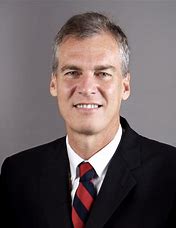The American Health Care Association’s Well-Funded PR Machine Is Promoting a False Narrative. The Ensign Group’s 10-K Debunks the Industry “Hardship Claim.”
The AHCA – the long-term care industry’s lobbying arm – has a perpetual propaganda machine which incessantly cranks out a hardship narrative. By operating mostly behind a veil of secrecy, the industry has been able to convince the public and legislators that profitability is so meager that firms are barely making it and, consequently, are on the verge of exiting the business.
Let’s consider the industry’s narrative in the context of what we are learning from publicly listed firms required to file financial statements with the Securities & Exchange Commission (available to the public). I will begin a series of posts with the consolidated financial statement of The Ensign Group, one of the handful of publicly listed long-term care corporations. I consider the Ensign Group to be the largest skilled nursing corporation with over 300 stand-alone nursing homes.
Other companies owning and operating skilled nursing facilities have larger annual revenues, but they are Real Estate Investment Trusts with a diverse portfolio in the broader senior housing realm. The Ensign Group owns and operates facilities in buildings it also owns. For this reason, I’m claiming that it is the “biggest” skilled nursing corporation.
2020: A Banner Year For The Ensign Group
On a February 4th conference call, The Ensign Group reported the following:
- Earnings per share of $3.06, an increase of 86.6% over the prior year.
- Revenues of $2.4 billion, an increase of 18% over the prior year.
- Net income of $174.6 million, an increase of 74.8% over the prior year. This is “GAAP net income.” GAAP is Generally Accepted Accounting Principles. This measure of net income will be significantly lower than non-GAAP measures, a fact with which I don’t need to bother readers.
- Liquidity, which is of great importance to shareholders, remains strong with $236.6 million in cash and equivalents on hand, and $340 million of available capacity under its line-of-credit facility.
- The company returned approximately $150 million relief funds provided under the CARES Act. Given the company’s strong financial condition, it’s interesting that a corporation as large and in solid financial condition would have received these grants in the first instance.
Financial Engineering through Patient Arbitrage
As we unravel the finances of the long-term care industry during the COVID-19 pandemic, we need to access all data pertaining to corporate patient mix. Furthermore, it’s well-known that patient care reimbursed by Medicare is much higher than reimbursement from Medicaid. Also, premiums are paid for patients with COVID.
Although there is plenty of evidence that Medicaid is profitable, providers will manipulate their business in favor of Medicare patients. I call this “patient arbitrage.” Given that protecting and enhancing shareholder value is the primary objective of long-term care corporations, no one should be surprised by the practice of seeking higher reimbursement patients.
By perusing The Ensign Group financial statements and promotional material, I surmise, reading between the lines, that the pressure on management at each facility to maximize revenue is rather intense. Here is a quote from the February 4th Conference Call:
Port noted that as evidence of the medical communities’ confidence in their local operations’ clinical capabilities, the Company saw a marked improvement in patient volumes, especially with high acuity and skilled patients with a 7.2% and 10.8% increase in Medicare census and 6.2% and 5.7% in managed care census, sequentially from second quarter to third quarter and third quarter to fourth quarter for same store and transitioning portfolio, respectively.
This improvement in our admissions trends not only gives us great confidence that we can continue to perform well as the pandemic stubbornly persists in many of our largest markets, but it also gives us confidence that we are in an excellent position to see occupancies normalize to pre-pandemic levels even while the pandemic continues to impact us and our patients. Because we have been working arm in arm with our hospital and managed care partners during this pandemic to care for both COVID-19 positive and negative patients with complex medical needs, our operations have solidified the critical role they play in the post-acute care continuum as an essential and cost-effective setting for highly complex patients.
Don’t Cry for Long-Term Care Corporations: Demand Accountability!
Most restaurants, movie theatres, and other small businesses in your community could only hope to have the government provided revenue stream as that provided to long-term care corporations throughout 2020 while the COVID scourge killed at least 200,000 people in their care. As the pandemic is brought under control, it is important to demand answers from our political representatives. What did providers do for patients and families versus shareholders? Why were nursing home systems in countries throughout Asia, Australia, New Zealand, and other parts of the world able to keep death in long-term care facilities so much lower than the United States? If our government is not presented with these and other questions along with a demand for answers, patients in nursing homes will remain vulnerable to the next pandemic.



